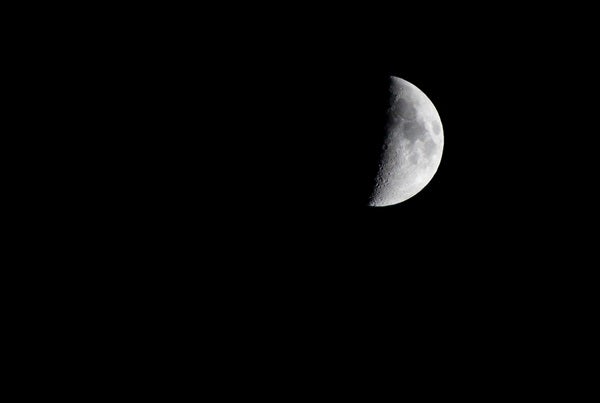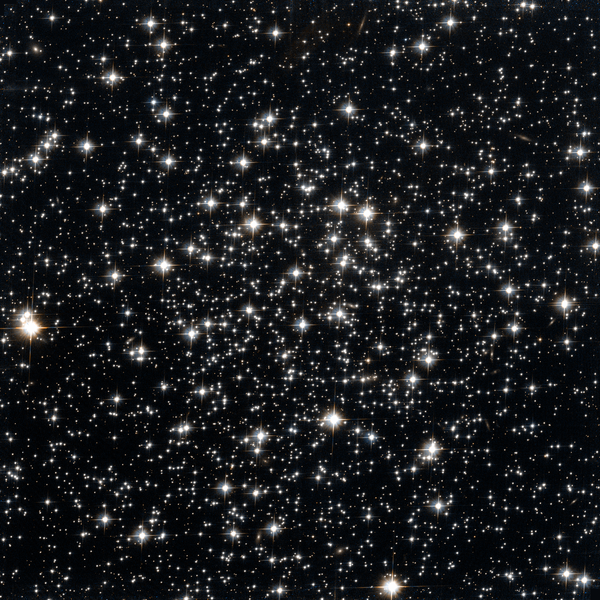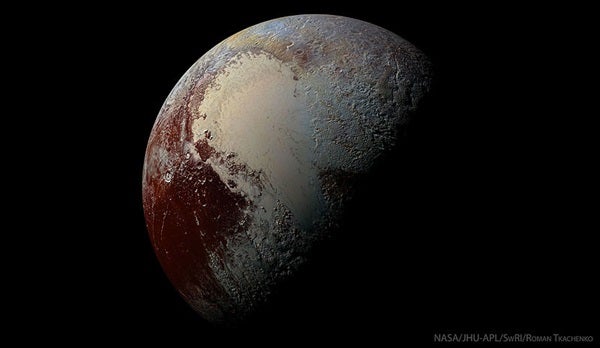Friday, June 30
First Quarter Moon arrives at 8:51 p.m. EDT. You can find the half-lit orb in the southwestern sky as darkness falls and then watch it sink toward the western horizon throughout the evening hours. It sets around 1 a.m. local daylight time. The Moon lies in central Virgo, just a few degrees to the right of brilliant Jupiter. Although the Moon’s presence makes the giant planet appear less conspicuous tonight, at magnitude –2.1, Jupiter is the brightest point of light in the evening sky. Wait a night or two before targeting the gas giant through a telescope. Your patience will reward you with stunning views of its turbulent atmosphere spread across a 37″-diameter disk.
Saturday, July 1
Observers of the outer solar system should target Uranus this week before the Moon sheds its unwanted light into the predawn sky. The best time to look for it is shortly before twilight begins around 3:30 a.m. local daylight time. Uranus then lies 25° above the eastern horizon among the background stars of Pisces the Fish. This morning, use binoculars to find the magnitude 5.8 planet 1° north and a touch west of 4th-magnitude Omicron (o) Piscium. A telescope reveals Uranus’ blue-green disk, which spans 3.5″.
Sunday, July 2
By the time morning twilight starts to paint the sky, brilliant Venus already dominates the scene. Although the inner planet reached its greatest elongation from the Sun a month ago, it now rises earlier and climbs higher before dawn. It rises at 3 a.m. local daylight time and stands nearly 20° above the eastern horizon an hour before sunrise. It’s hard to mistake the inner planet for anything else — at magnitude –4.2, it shines brighter than any other point of light in the sky. As a bonus, you can find the striking Pleiades star cluster (M45) just 7° north of Venus these next three mornings. When viewed through a telescope, Venus shows an 18″-diameter disk that appears 63 percent illuminated.
Monday, July 3
If you target the globular cluster NGC 6366 in Ophiuchus through a telescope tonight, you can be forgiven for thinking that one of its stars has gone nova. But the bright imposter is actually asteroid 6 Hebe lying in front of the cluster’s northern fringes. The cluster’s brightest stars glow at 14th magnitude, so the 9th-magnitude asteroid really stands out. By tomorrow evening, Hebe lies about halfway between the cluster and the neighboring star SAO 141665, which shines at magnitude 4.5.
If you ever thought the Sun’s distance controlled temperatures here on Earth, today should convince you otherwise. At 4 p.m. EDT, our planet reaches its most distant point from the Sun during 2017. At this so-called aphelion, the two lie 94.5 million miles (152.1 million kilometers) apart, some 3.1 million miles (5.0 million km) farther away than they were at perihelion in early January. The Northern Hemisphere’s warm temperatures at this time of year arise because the Sun passes nearly overhead at noon; during winter, the Sun traces a low path across the sky.
Tuesday, July 4
No holiday better epitomizes summer in the United States than Independence Day. And the season’s namesake asterism — the Summer Triangle — will be on prominent display as fireworks ring out across the land. The trio’s brightest member, Vega in the constellation Lyra the Harp, stands nearly overhead in late evening. The asterism’s second-brightest star, Altair in Aquila the Eagle, then lies about halfway from the southeastern horizon to the zenith. Deneb, the luminary of Cygnus the Swan, marks the Summer Triangle’s third corner. Although it is this asterism’s dimmest star, it’s the brightest point of light in the northeastern sky.
Wednesday, July 5
Despite the Moon’s presence, this week offers a good opportunity for binocular users to track down one of summer’s finest open star clusters. NGC 6231 lies in the tail of Scorpius the Scorpion, just 0.5° north of the double star Zeta (z) Scorpii (which is another fine binocular sight). NGC 6231 shines at magnitude 2.6 and packs more than 100 stars into a region about half the width of the Full Moon. This part of Scorpius lies nearly due south after darkness falls, though it doesn’t climb high from mid-northern latitudes.
Thursday, July 6
The waxing gibbous Moon passes just 3° north of Saturn this evening, helping point the way to the magnificent ringed planet. The two are on display nearly all night among the background stars of southern Ophiuchus, hanging in the southeastern sky as darkness falls and climbing high in the south by midnight local daylight time. The pair will look nice with the naked eye or binoculars, but telescope users will want to choose another night this week when the Moon isn’t so close to target the magnitude 0.1 planet. Saturn reached its peak just three weeks ago, when it appeared opposite the Sun in the sky, and our view of the ringed planet remains spectacular. A telescope reveals the world’s 18″-diameter disk surrounded by a dramatic ring system that spans 41″ and tilts 27° to our line of sight.
The Moon reaches apogee, the farthest point in its orbit around Earth, at 12:28 a.m. EDT. It then lies 252,236 miles (405,934 kilometers) from Earth’s center.
Friday, July 7
This week offers observers their first peek of Mercury during its current evening apparition. The innermost planet stands 6° high in the west-northwest a half-hour after sunset tonight. Although Mercury glows brightly, at magnitude –0.6, you might need binoculars to spot it initially against the twilight glow. A telescope reveals the planet’s disk, which spans 5.6″ and appears 80 percent lit.
Saturday, July 8
Full Moon officially arrives at 12:07 a.m. EDT tomorrow morning, but it looks completely illuminated all night. It appears low in the southeast as the Sun sets and climbs highest in the south around 1 a.m. local daylight time. The Full Moon resides among the background stars of Sagittarius the Archer throughout the night.
Sunday, July 9
Tonight marks the peak of Pluto’s 2017 appearance. The distant world reaches opposition, which means it lies opposite the Sun in our sky and remains visible all night. It glows dimly at 14th magnitude, however, so you’ll need an 8-inch or larger telescope with good optics to spot it visually. Pluto currently lies in northeastern Sagittarius, some 1.8° east-southeast of 3rd-magnitude Pi (p) Sagittarii. See “In pursuit of Pluto” in the July Astronomy for complete details on finding this world.












